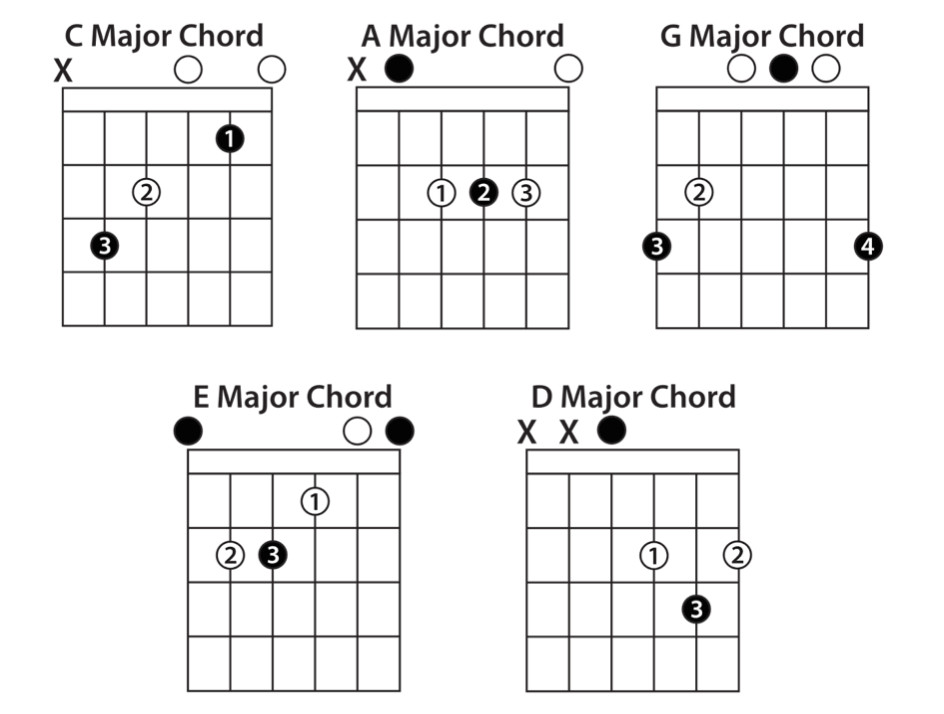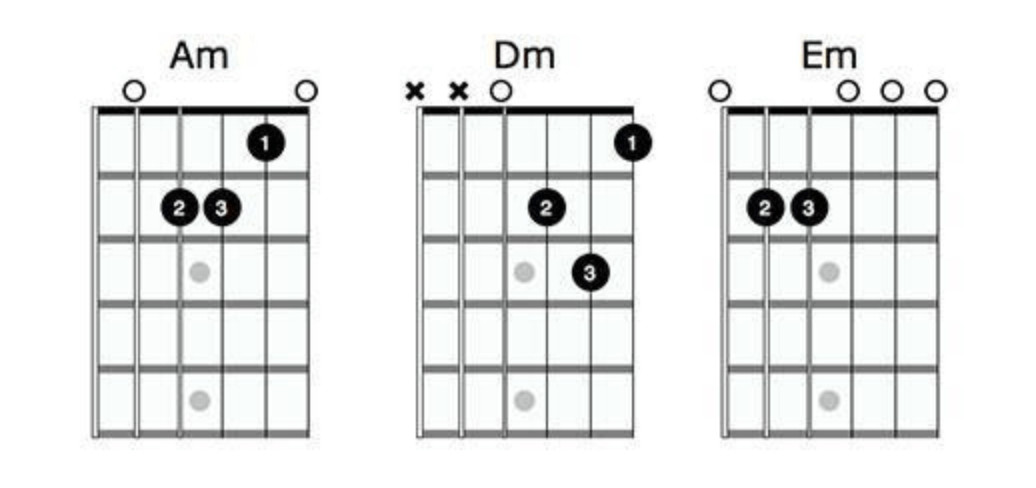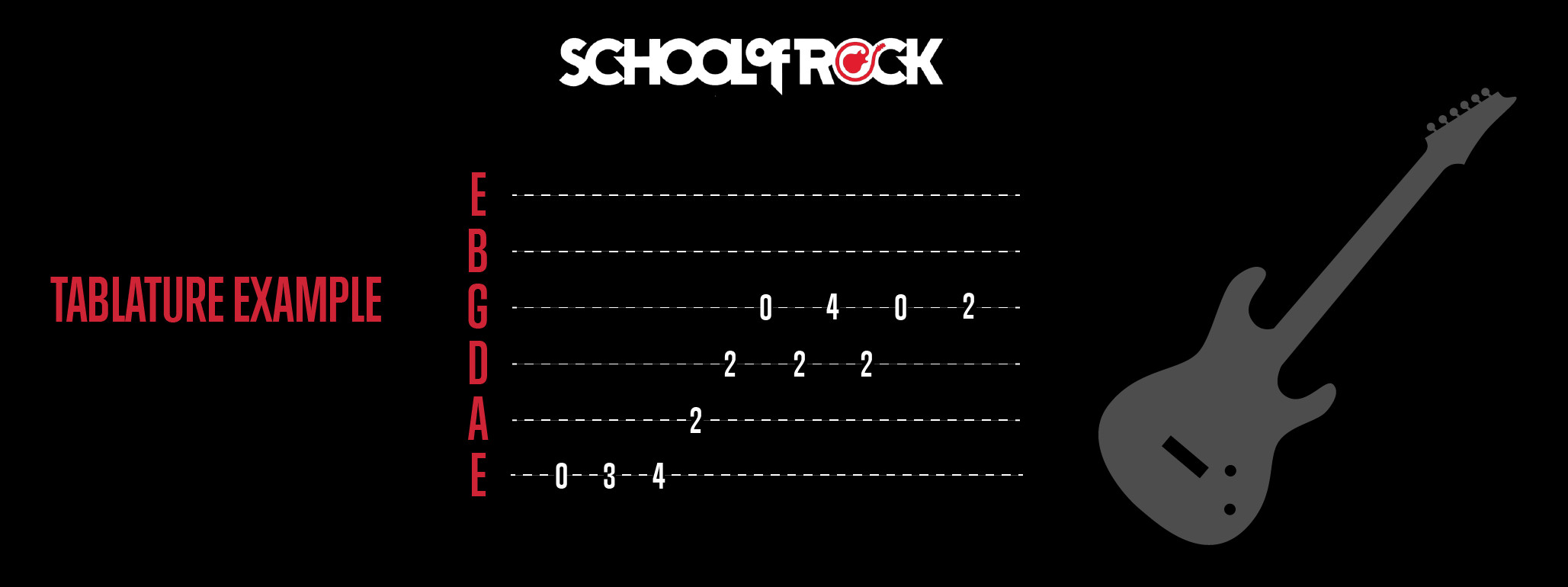Picking up a guitar for the first time is exciting. Your fingers are itching to play, and the possibilities seem endless. But where do you even begin? For most aspiring guitarists, learning Basic Guitar Chords is the foundational first step. Chords are the building blocks of harmony in music. They provide rhythm, depth, and richness that makes music feel complete. While instruments like drums and bass focus on rhythm and depth, most melodic instruments rely on chords to create musical textures. Let’s dive into the essential world of basic guitar chords for beginners, explore useful tips and tricks to play them cleanly, and discover songs you can start playing right away.
The School of Rock method emphasizes practical application. Students immediately apply lesson room learning to live performances, learning to play as both lead and rhythm guitarists. Lead guitarists typically focus on melodies, riffs, and solos, while rhythm guitarists are the chord masters, employing strumming and fingerpicking techniques. Regardless of your preferred style, mastering chords is crucial. If you’re in the market for your first guitar, or considering an upgrade, check out this helpful guitar-buying guide for valuable advice.
Understanding Guitar Chords for Beginners
Guitar chords can initially seem daunting. There are many chord types and various ways to play them. However, understanding the fundamental categories simplifies the learning process. Generally, basic guitar chords fall into three main categories:
Power Chords
Power chords are often among the first chords taught at institutions like School of Rock, and for good reason. They are incredibly versatile, appearing across genres from rock to pop. Beginners find power chords relatively easy to grasp because they typically involve only two or three strings and frets. This simplified finger placement makes them physically less demanding. While playable on any guitar, power chords are particularly favored on electric guitars. Electric guitars amplify power chords’ inherent sonic potential, allowing for distortion and effects that add significant weight and character to rock and other genres. Power chords are excellent for establishing the mood and energy of a song.
Open Chords
Open chords are another excellent starting point for beginner guitarists. As the name suggests, open chords incorporate open strings—strings played without fretting. Similar to power chords, open chords often involve fewer frets and fingers compared to more complex chord types, making them easier to manage initially. However, unlike power chords that utilize a limited number of strings, open chords typically use all six guitar strings. Your fretting hand won’t be required for every string, simplifying fingerings. A crucial set of open chords for beginners are the “CAGED” chords. We will explore these essential chords and how to play them in detail shortly.
Barre Chords
Barre chords represent a step up in difficulty from power and open chords, but they are incredibly valuable for expanding your guitar vocabulary. Barre chords are based on movable shapes. Once you learn a barre chord shape, you can slide it up and down the guitar neck to create different chords. This mobility makes barre chords efficient for chord changes, as you maintain a consistent hand shape. However, barre chords are notoriously challenging for beginners because they often require one or even two fingers to press down multiple strings at the same fret simultaneously. While we won’t delve deeply into barre chords in this beginner-focused article, understanding their existence and potential is important for your guitar journey.
Exploring Open Guitar Chords: CAGED and Beyond
Before diving into specific open chords, tuning is paramount. A properly tuned guitar ensures that your chords will sound in key and harmonious. If you’re struggling with tuning, School of Rock offers a helpful guide: Beginner’s Guide to Tuning a Guitar. A well-tuned guitar will make learning chords much more rewarding.
 Open Guitar Chords for Beginners
Open Guitar Chords for Beginners
Let’s now explore open chords, specifically the CAGED system. CAGED chords are fundamental to the School of Rock’s performance-based teaching method because these chords are prevalent in a vast repertoire of popular songs that students learn and perform. The acronym CAGED represents five common open chord shapes: C, A, G, E, and D major. Each letter corresponds to a major chord shape rooted at a different position on the fretboard. Chord diagrams are essential tools for learning these shapes.
Deciphering Chord Diagrams: Finger Placement
Chord diagrams are visual representations that show you exactly how to play a chord. They illustrate which strings to play, which frets to press, and which fingers to use. Chord diagrams are read horizontally, with the thickest line representing the low E string (6th string) and the thinnest line representing the high E string (1st string). Imagine holding your guitar upright in front of you – that’s the orientation of the diagram.
Symbols on the diagram are crucial:
- X: Indicates a muted string. This string should not be played.
- O (Circle): Represents an open string. Play this string without fretting any note.
- Numbers: Located on the frets, these numbers indicate which finger to use: 1 = index finger, 2 = middle finger, 3 = ring finger, and 4 = pinky finger. The fret number is determined by the vertical position on the diagram, starting with the first box as the first fret.
For example, in the A Major chord diagram, all finger placements are on the second fret. The diagram shows your index finger on the second fret of the D string, your middle finger on the second fret of the G string, and your ring finger on the second fret of the B string.
 Alt text: Chord diagram for A Major, illustrating finger positions on the second fret of the D, G, and B strings, with open E, A, and high E strings.
Alt text: Chord diagram for A Major, illustrating finger positions on the second fret of the D, G, and B strings, with open E, A, and high E strings.
Beyond the CAGED system, several other open chords are frequently used and are beginner-friendly. These chords expand your musical palette and are commonly found in countless songs.
 Alt text: Chord diagrams for common beginner-friendly open chords: D Major, E Major, E minor, and A minor, showing finger placements and open strings.
Alt text: Chord diagrams for common beginner-friendly open chords: D Major, E Major, E minor, and A minor, showing finger placements and open strings.
It’s important to distinguish chord diagrams from tablature (TAB). While both are guitar notation systems, they function differently. Tablature is designed to show you where to play specific notes on the guitar, focusing on melody and riffs. In tablature, horizontal lines represent the guitar strings, read vertically, with the bottom line as the low E string and the top line as the high E string. Numbers on the lines indicate the fret number to play on that string, with “0” representing an open string.
 Alt text: Example of guitar tablature showing notes played on different strings and frets, demonstrating the vertical string representation and fret number notation.
Alt text: Example of guitar tablature showing notes played on different strings and frets, demonstrating the vertical string representation and fret number notation.
Chord diagrams are invaluable tools for learning chords because they not only show you the finger positions but also often suggest the optimal fingers to use for smooth transitions between chords. Consistent practice with chord diagrams will commit these shapes to your muscle memory, eventually allowing you to play chords without needing to constantly refer to the diagrams. As you practice new chords, keep these essential tips in mind:
- Fret Close to the Fret Wire: Position your fingers just behind the metal fret wire. This requires less pressure to produce a clear sound. Avoid fretting directly on top of or too far behind the fret wire. Experiment to find the sweet spot.
- Use Your Fingertips: Press down on the strings with your fingertips, angling your fingers slightly. This ensures clarity and avoids accidentally muting adjacent strings. Arch your fingers into a ‘C’ shape.
- Play Each String Individually: After forming a chord, strum each string separately to check for clarity. Muffled or buzzing sounds indicate improper finger placement. Identify the problem string and adjust your fretting hand accordingly.
- Practice Fretting and Unfretting: Repeatedly place your fingers into a chord shape and then lift them off, hovering them above the fretboard. This builds muscle memory and improves the speed and accuracy of your chord changes.
Songs to Practice Basic Guitar Chords
Now that you’ve learned some essential basic guitar chords, let’s explore songs you can start playing. Many popular songs are built around simple chord progressions, making them ideal for beginners. Here are some examples utilizing CAGED chords and common minor chords:
- “Sweet Home Alabama” by Lynyrd Skynyrd: A classic beginner song using only three chords: C, G, and D major.
- “Bad Moon Rising” by Creedence Clearwater Revival: Played in the key of D, this song features G, D, and A major chords.
- “Love Me Do” by The Beatles: In the key of G, this iconic song uses G, C, and D major chords.
- “Eleanor Rigby” by The Beatles: In E minor, this song primarily uses C major and variations of E minor.
- “Time of Your Life” by Green Day: In G major, this song uses G, C, Cadd9, and D5 power chords. You can easily substitute a regular D major chord for the D5 power chord and achieve a similar sound.
- “Island in the Sun” by Weezer: This catchy tune uses a four-chord progression throughout most of the song: Em, Am, D, and G major. The bridge section incorporates power chords, providing an opportunity to practice both open and power chords.
- “Boulevard of Broken Dreams” by Green Day: In F minor, this song uses Em, G, D, and A major chords. Like “Island in the Sun,” it also features power chords towards the end, making it great practice for both chord types.
More Popular Songs for Beginner Guitarists:
- “Hey There Delilah” by Plain White T’s
- “Hallelujah” by Leonard Cohen
- “Redemption Song” by Bob Marley
- “Smoke on the Water” by Deep Purple (Main riff uses power chords)
- “Stairway to Heaven” by Led Zeppelin (Opening section)
- “Hotel California” by Eagles (Intro and verses)
Power Chords: A Stepping Stone
Power chords, while simpler than open chords, share a conceptual similarity with barre chords. Compared to open chords, power chords are “thinner” harmonically, containing fewer notes and thus using fewer strings and frets. However, the basic shapes can be related. Consider an A major chord versus an A5 power chord. A major contains the notes A, C#, and E. An A5 power chord contains A and E. The A major chord includes the root, third, and fifth of the A major scale, while the A5 power chord focuses on the root, fifth, and octave (which is also an A note). In essence, they are harmonically related, with the power chord omitting the third.
The absence of the third is key: power chords are neither major nor minor. The third of a chord determines its major or minor quality. Because power chords lack a third, they are harmonically ambiguous and can be used effectively in place of either major or minor chords, depending on the musical context. Experiment and listen for the sonic differences between open chords and power chords to develop your ear.
Power chords are also easier to play than barre chords, although they can be seen as an introductory form. Three-string power chords can even be played using a “barre” technique, where one finger presses down two strings at the same fret. Practicing barring two strings for power chords is excellent preparation for tackling full barre chords later on.
Power chords are ubiquitous in rock music and also appear in pop and other genres. School of Rock’s Rock 101 program introduces beginner guitarists to power chords through classic rock songs. Here are some examples for practice:
- “Wild Thing” by The Troggs: Heavily reliant on A5, D5, and E5 power chords, with occasional G5 power chords.
- “Let It Be” by The Beatles: This song can be played with open chords (C, G, Am, F) or power chords (C5, G5, F5). Experiment with both to hear the different textures.
- “Rock and Roll” by Led Zeppelin: A power chord anthem using A5, D5, and E5.
- “I Love Rock and Roll” by Joan Jett: Features E5, A5, and B5 power chords.
- “When I Come Around” by Green Day: The entire song is built on power chords: F#5, C#5, D#5, and B5.
- “Rockin’ In the Free World” by Neil Young: Starts with power chords (E5, D5, C5) and transitions into a mix of power and open chords (Em, D, C and their power chord counterparts).
 Other commonly used beginner guitar chords.
Other commonly used beginner guitar chords.
Take the Next Step in Your Guitar Journey
With a grasp of basic guitar chords and practice songs, are you ready to put your newfound skills to use? Do you need further guidance to progress? School of Rock is here to help! We offer private music lessons and diverse music programs designed to set you on the path to guitar mastery. Programs like Rock 101 and the Performance Program bridge the gap between private lessons and real-world performance, enabling beginners and intermediate players to learn full songs and perform as part of a band. Through our programs and lessons, students develop musical talent, life skills, and teamwork abilities. Many of the songs mentioned in this article are taught within these programs, helping you master open guitar chords, power chords, and essential music theory. If you’re eager to learn more, contact your nearest School of Rock location and take your guitar playing to the next level!
About the Author:
Miranda Morales is a guitar and keyboard instructor at School of Rock Easton in Pennsylvania.

